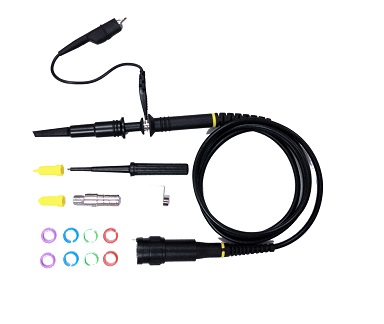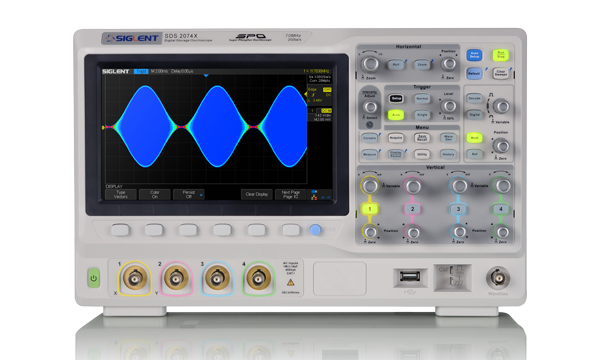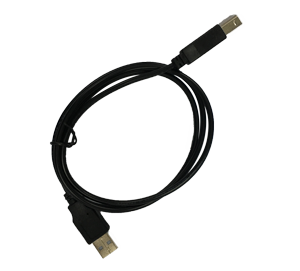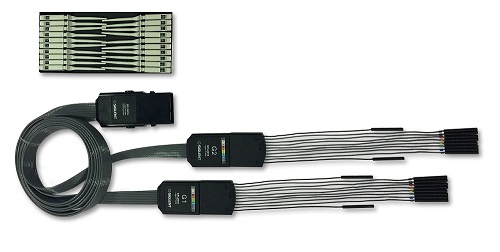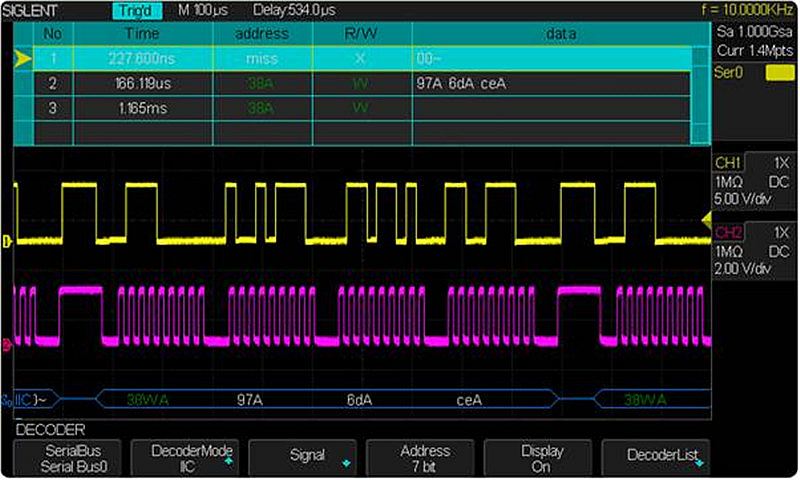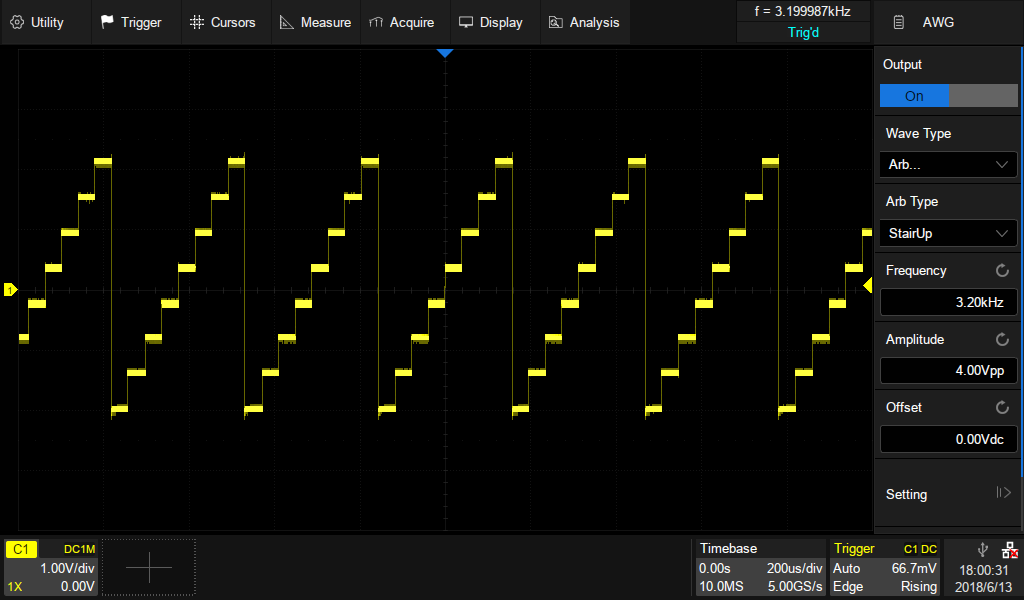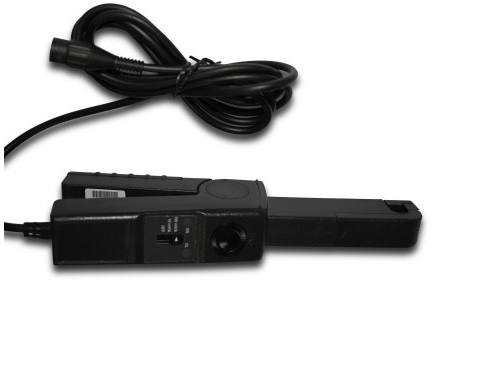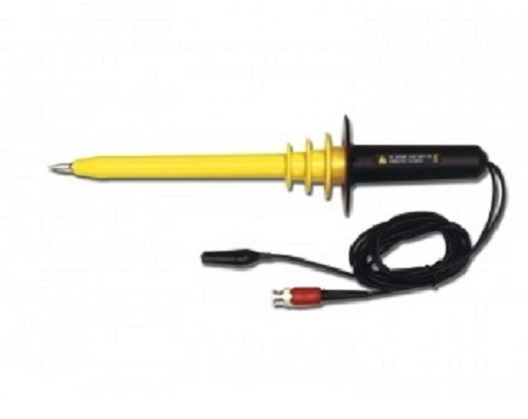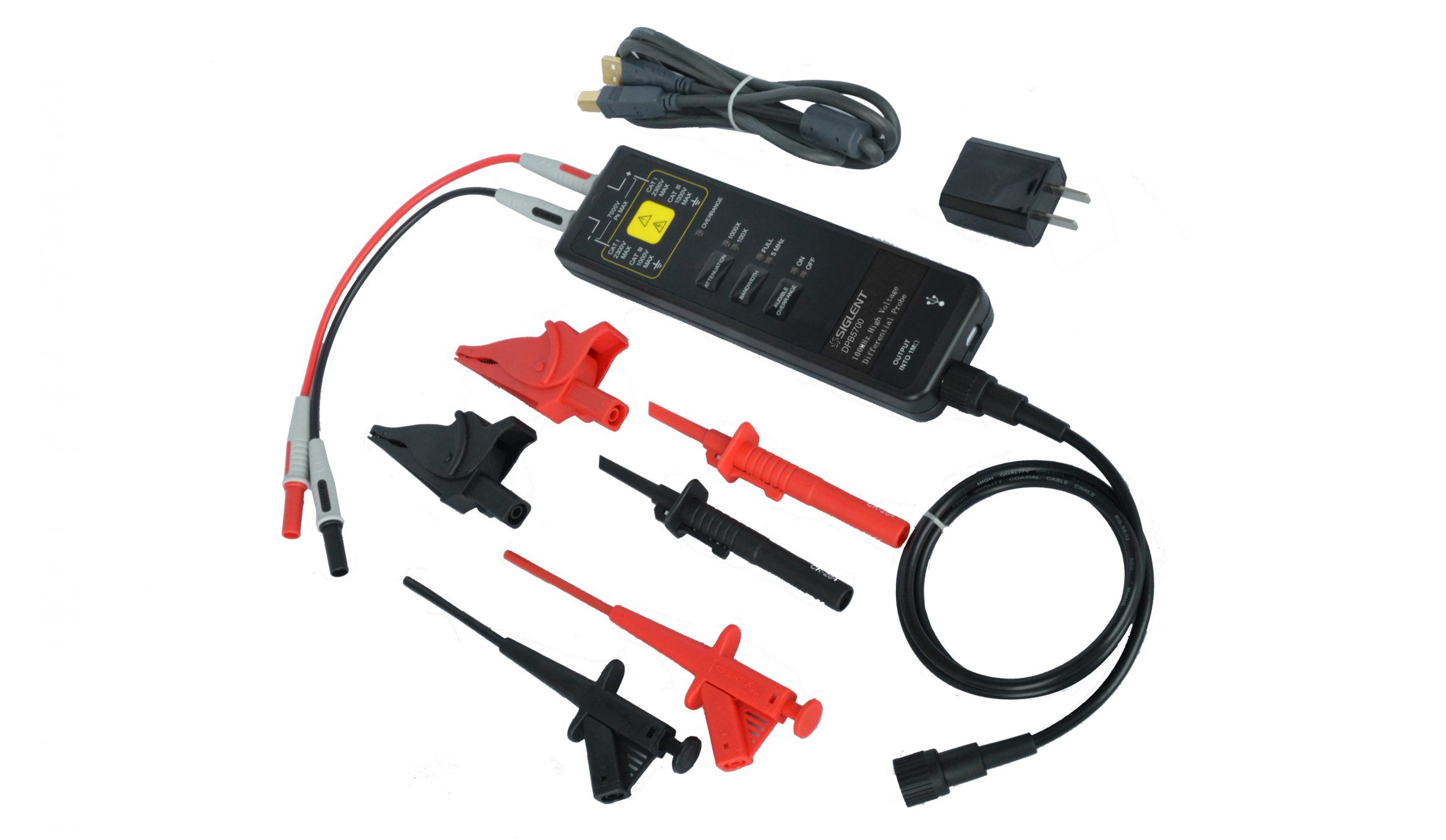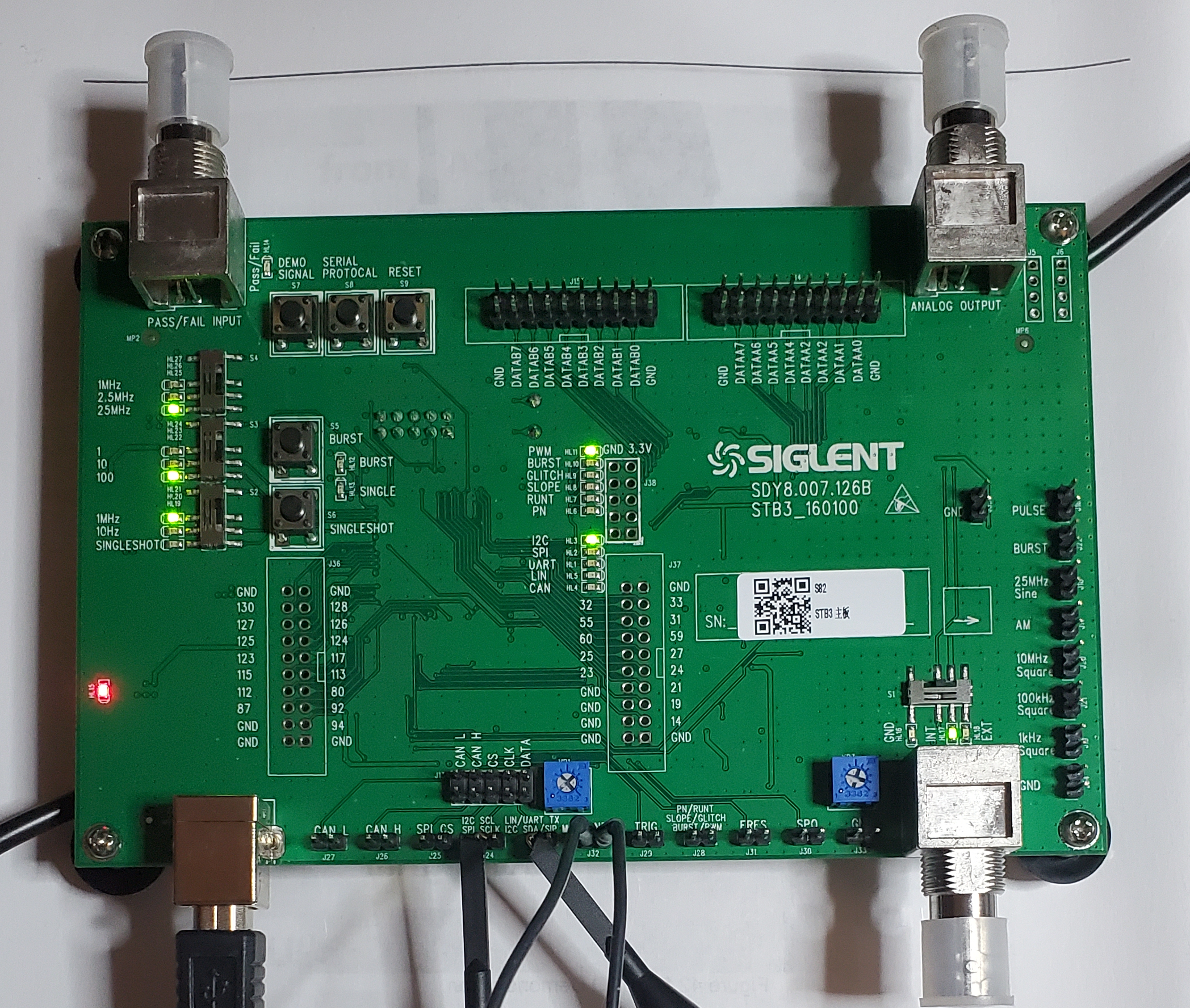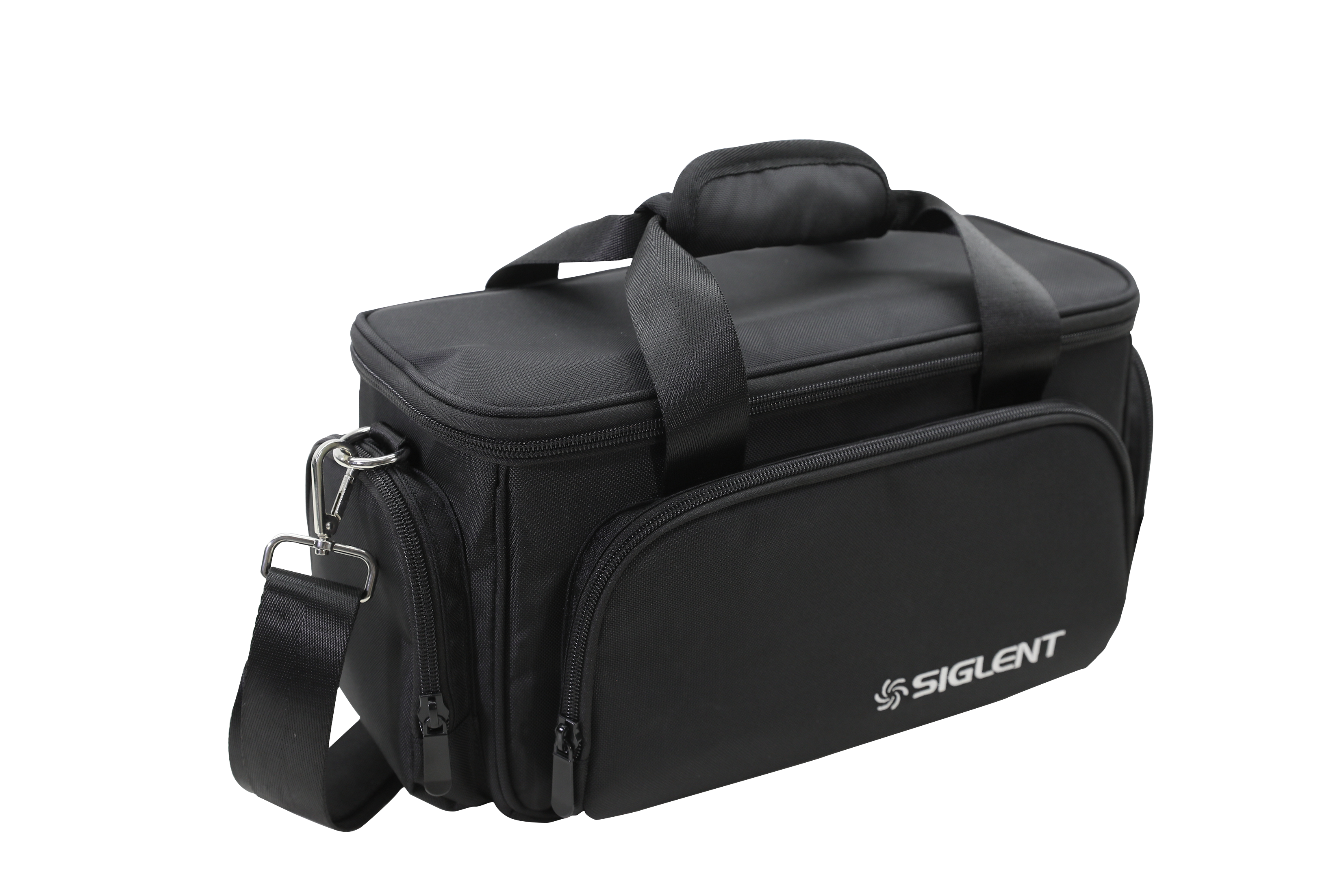Product Overview
SIGLENT’s SDS2000X Series Super Phosphor Oscilloscopes are available in bandwidths of 70, 100, 200, and 300 MHz, maximum sample rate of 2 GSa/s, and come with a maximum record length of 140 Mpts. The most commonly used functions can be accessed with its user-friendly one-button design.
The SDS2000X series employs a new generation of SPO technology. It has an innovative digital trigger system with high sensitivity and low jitter, and a maximum waveform capture rate of 140,000 wfm/s (normal mode), up to 500,000 wfm/s (sequence mode). It also employs a 256-level intensity grading display with a color temperature mode to help visualize issues quickly. The trigger system supports triggering modes including serial bus and video triggering. The 2000Xs also feature a history waveform recording and sequence acquisition for recording and replaying multiple trigger events. Other features include an impressive array of measurement and math capabilities, options for a built-in 25 MHz arbitrary waveform generator, 16 digital channels (MSO), and serial decoding.
As of December 2020, we have a limited quantity of SDS2000X oscilloscopes available. As they near end-of-life, see SDS2000X Plus models as potential replacements.
| Bandwidth | Channels | Real time sampling rate | Capture rate | Memory depth | Price | ||
| SDS2304X | 300 MHz | 4 | 2 GSa/s | 140,000 wfm/s | 140 Mpts | $1,971 | Discontinued |
| SDS2302X | 300 MHz | 2 | 2 GSa/s | 140,000 wfm/s | 140 Mpts | $1,539 | Discontinued |
| SDS2204X | 200 MHz | 4 | 2 GSa/s | 140,000 wfm/s | 140 Mpts | $1,532 | Discontinued |
| SDS2202X | 200 MHz | 2 | 2 GSa/s | 140,000 wfm/s | 140 Mpts | $1,117 | Discontinued |
| SDS2104X | 100 MHz | 4 | 2 GSa/s | 140,000 wfm/s | 140 Mpts | $1,147 | Discontinued |
| SDS2102X | 100 MHz | 2 | 2 GSa/s | 140,000 wfm/s | 140 Mpts | $790 | Discontinued |
| SDS2074X | 70 MHz | 4 | 2 GSa/s | 140,000 wfm/s | 140 Mpts | $1,285 | Discontinued |
| SDS2072X | 70 MHz | 2 | 2 GSa/s | 140,000 wfm/s | 140 Mpts | $885 | Discontinued |
Key Features
- Intelligent triggers: Edge, Slope, Pulse, Window, Runt, Interval, Dropout, Pattern, Video (HDTV supported)
- Serial bus triggering and decoder, supports protocols IIC, SPI, UART, RS232, CAN and LIN (Optional)
- Low background noise, includes 1 mV/div to 10 V/div voltage scales
- 10 types of one-button shortcuts, including Auto Setup, Default, Cursors, Measure, Roll, History,
Display/Persist, Clear Sweeps, Zoom and Print - Segmented acquisition (Sequence) mode divides the maximum record length into multiple segments
(up to 80,000) according to trigger conditions set by the user. The resulting acquisition has a very small
dead time - History waveform record (History) function, the maximum recording length is 80,000 frames
- Automatic measurement function on 37 parameters, supports statistics, Gating measurements, Math
measurements, History measurements and Ref measurements - Math function (FFT, addition, subtraction, multiplication, division, integration, differential, square root)
- High-speed hardware based Pass/ Fail function
- 16 Digital channels (MSO option), Maximum waveform capture rate up to 500 MSa/s, Record length up to 14 Mpts/ch
I spent a long time researching various oscilloscopes. It got to be fairly evident that the Siglent line clearly gave the best performance per dollar invested of any of these instruments. Once I received the scope, I was delighted to find that my research had paid off. The scope is very easy to use and certainly meets all of its specifications.
Richard Melvilleon
August 31, 2016
8-inch TFT-LCD display with 800 * 480 resolution. Most commonly used functions are accessible using 10 different one-button operation keys: Auto Setup, Default, Cursors, Measure, Roll, History, Display/Persist, Clear Sweeps, Zoom and Print. Supports auto detection of 10X probe with read-out port (200 MHz and 300 MHz versions only).
Product Characteristics
Waveform Capture Rate up to 500,000 wfm/s View more
Waveform Capture Rate up to 500,000 wfm/s
With a waveform capture rate of up to 500,000 wfm/s (sequence mode), the oscilloscope can easily capture unusual or small probability events
Record Length of up to 140 Mpts View more
Record Length of up to 140 Mpts
The hardware-based zoom and deep memory (140 Mpts) enables the use of a high sampling rate to capture more of the signal, and then quickly zoom in to focus on the area of interest
256-level Intensity Grading View more
256-level Intensity Grading
Events that occur more frequently are brighter (intensity grading) than events that occur less often. This allows you to quickly identify spurious signals.
Color Temperature Display View more
Color Temperature Display
Event frequency is shown using different colors (temperature grading). Frequent events are warmer the color. This helps to easily identify rare events.
Variety of Trigger Functions View more
Variety of Trigger Functions
Edge, Slope, Pulse, Video, Windows, Runt, Interval, Dropout, Pattern, IIC, SPI, UART/RS232, LIN and CAN
History Mode View more
History Mode
The history function can record up to 80,000 frames of data. Each frame can be analyzed, replayed individually, timestamped, and also played as part of a sequence.
Sequence Mode View more
Sequence Mode
Segmented memory collection will store the waveform into multiple (up to 80,000) memory segments and each segment will store a triggered waveform, as well the dead time information. The dead time between segments can be as small as 2 μs. All the segments can be played back using the history function.
Comprehensive Statistical Functions View more
Comprehensive Statistical Functions
5 statistics can be reported for any set of measurements: current, mean, minimum value, maximum value, and standard deviation.
Advanced Math Function View more
Advanced Math Function
Supports traditional (+, -, X, /) operations as well as FFT, integration, differential, and square root operations.
Eres Mode View more
Eres Mode
Eres mode uses oversampling and averaging to improve the SNR of a measurement.
16 Digital Channels / MSO (Optional) View more
16 Digital Channels / MSO (Optional)
4 analog channels plus 16 digital channels enables users to trigger, observe, and decode on analog and digital channels simultaneously.
Serial Bus Decoding Function (Optional) View more
Serial Bus Decoding Function (Optional)
Displays the decoded signals in a list. Bus protocol information can be quickly and intuitively displayed in tabular format.
Built-in 25 MHz Function/Arbitrary Waveform Generator (Optional) View more
Built-in 25 MHz Function/Arbitrary Waveform Generator (Optional)
Built-in generator can be used to stimulate devices or circuits and save bench space. Includes 10 built-in waveforms plus 4 ARBs. The arbitrary waveforms can be accessed and edited by the EasyWave PC software
Standard Accessories
Passive Probes
